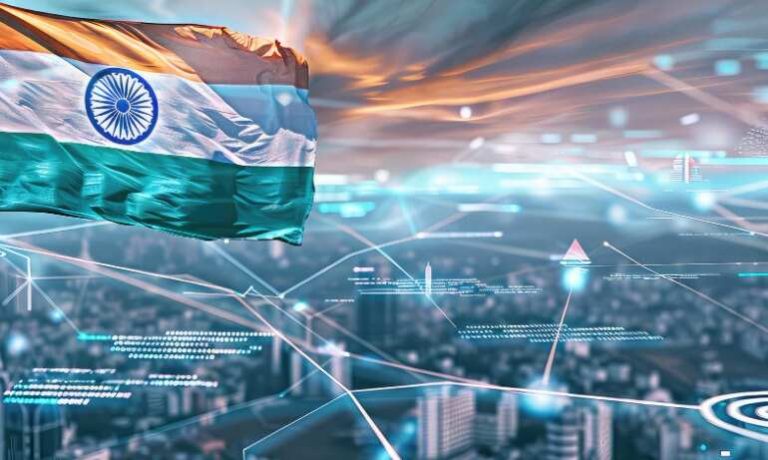Introduction
Transgender individuals in India, often referred to as Hijras, have been a part of Indian society for centuries, mentioned in ancient texts and depicted in various historical contexts. Despite their long-standing presence, they have faced substantial social exclusion, discrimination, and lack of legal recognition. The legal recognition of transgender rights in India has been a slow and complex process, marked by several pivotal moments and landmark judgments.
Who is a Transgender Person?
According to Indian law, a transgender person is someone whose gender identity does not align with the sex assigned to them at birth. This definition includes trans-men, trans-women, individuals with inter-sex variations, gender-queer persons, and those with socio-cultural identities such as hijra, kinner, aravani, and jogta.
Legal Recognition and Rights
In 2014, the Supreme Court of India, through the landmark NALSA v. Union of India judgment, recognized ‘transgender’ as a third gender. This decision was a watershed moment, affirming that transgender persons are entitled to fundamental rights under the Indian Constitution, including:
-
Right to Equality (Article 14)
Guarantees equality before the law and equal protection of the laws to all persons, including transgender individuals.
-
Prohibition of Discrimination (Article 15)
Prohibits discrimination on various grounds, including gender identity.
-
Right to Freedom of Speech and Expression (Article 19)
Ensures the freedom to express one’s gender identity.
-
Right to Life and Personal Liberty (Article 21)
Protects the right to live with dignity, including the right to privacy and the right to self-identify one’s gender.
Gender Identity Certificate
Transgender persons can officially record their gender identity through a certificate issued by the District Magistrate. The process includes:
- Application to the District Magistrate.
- Issuance of an identity certificate.
- Updating gender records if the person undergoes sex-reassignment surgery.
Welfare Measures and Reservations
The law mandates the establishment of welfare measures, including:
- Garima Grehs: Shelter homes for transgender persons who are homeless or abandoned.
- Reservation in Education and Employment: Transgender persons can be classified as Other Backward Classes (OBCs) for reservations.
Protection Against Violence and Abuse
The Act criminalizes various forms of abuse against transgender persons, including physical, sexual, verbal, emotional, and economic abuse. Violators can face imprisonment ranging from six months to two years and a fine.
Marriage and Family Rights
Transgender persons can marry under personal religious laws or the Special Marriage Act, 1954. Courts have upheld the right of transgender individuals to enter into live-in relationships and have ruled in favor of recognizing their gender identity in marriage.
Public and Political Participation
Transgender persons have the right to vote and contest elections. They can use public facilities and transport without discrimination, and workplaces are required to implement anti-discrimination measures.
Legal Recourse
Transgender individuals can seek redress for rights violations through various legal avenues, including the National Council for Transgender Persons and the judiciary. The National Council addresses grievances and monitors policy implementation affecting transgender persons
Prohibition Against Discrimination of Transgender Persons in India
Transgender individuals in India have historically faced severe discrimination in various sectors, including housing, health, education, and employment. The Transgender Persons (Protection of Rights) Act, 2019 was enacted to safeguard their rights and protect them from discrimination. The Act covers crucial areas such as education, employment, healthcare, and welfare measures.
Landmark Judgments and Legal Developments
-
Justice K.S. Puttaswamy v. Union of India (2017)
The Supreme Court’s ruling in the Justice K.S. Puttaswamy v. Union of India case, which recognized the right to privacy as a fundamental right, had significant implications for transgender rights. The Court emphasized that the right to privacy includes the right to make decisions about one’s gender identity, further strengthening the legal framework for transgender rights in India.
-
Navtej Singh Johar v. Union of India (2018)
In the Navtej Singh Johar v. Union of India case, the Supreme Court decriminalized consensual same-sex relations by reading down Section 377 of the Indian Penal Code. This landmark judgment had a profound impact on the LGBTQ+ community, including transgender individuals, by affirming their right to love and live with dignity without fear of criminal prosecution.
-
NALSA vs. Union of India (2014)
A watershed moment came in 2014 with the National Legal Services Authority (NALSA) vs. Union of India judgment. This landmark case recognized transgender persons as the “third gender” and guaranteed them fundamental rights under the Indian Constitution. The judgment was a turning point in the legal recognition of transgender rights in India, with several critical aspects:
-
- Right to Self-Determination: The Court recognized the right of individuals to self-identify their gender, whether as male, female, or transgender.
- Social Inclusion: Transgender persons were granted the right to reside in their household and be recognized as part of their family.
- Educational and Employment Rights: The judgment emphasized the right to education and employment for transgender individuals.
- Healthcare Rights: The Court directed the government to ensure access to healthcare for transgender persons.
- Anti-Discrimination: The judgment called for measures to eliminate discrimination against transgender individuals.
This judgment marked a crucial step towards achieving equality for transgender people in India.
Judicial Observations:
Justice K.S. Radhakrishnan, while delivering the judgment, noted that the recognition of transgender people as a third gender is a human rights issue rather than a social or medical one. The Court also highlighted that gender identity is a matter of personal freedom and self-determination, which is crucial for the fullest development of an individual’s personality.
The NALSA judgment is a significant step towards ensuring the rights and dignity of transgender individuals in India. By recognizing transgender as a third gender, the Supreme Court has paved the way for greater inclusion and protection of this marginalized community, emphasizing that human rights and dignity are paramount for every individual, regardless of their gender identity.
Right of Transgender Persons Bill, 2014
The Right of Transgender Persons Bill, 2014 was introduced in Rajya Sabha and passed unanimously, ensuring substantive rights for transgender persons, including equality, non-discrimination, life, personal liberty, free speech, and protection from abuse and violence. The Bill mandates the government to provide inclusive education, vocational training, self-employment schemes, and healthcare facilities for transgender persons.
Definitions
- Transsexual: Individuals seeking hormonal and surgical treatment to modify their bodies to align with their gender identity.
- Transgender: A broad term describing cross-gender behaviors and identities.
- Binary Gender: A traditional view limiting gender to ‘man’ and ‘woman.’
- Binary Sex: A traditional view limiting sex to ‘male’ and ‘female.’
- Gender Identity: A person’s internal sense of being either male, female, or something else.
- Gender Expression: External characteristics and behaviors socially defined as masculine or feminine.
The Transgender Persons (Protection of Rights) Act, 2019
India has made significant strides in recognizing and protecting the rights of transgender individuals. This progress is primarily driven by the enactment of the Transgender Persons (Protection of Rights) Act, 2019, and the Transgender Persons (Protection of Rights) Rules, 2020. These legal frameworks aim to address the pervasive discrimination and marginalization faced by transgender persons, ensuring their rights and dignity are upheld.
In response to the NALSA judgment and the growing demand for legal protection for transgender individuals, the Indian Parliament enacted the Transgender Persons (Protection of Rights) Act, 2019. This legislation aims to provide a comprehensive legal framework for the protection of transgender rights.
- Definition: The Act defines a transgender person as someone whose gender does not match the gender assigned at birth, including trans-men and trans-women, persons with intersex variations, and gender queers.
- Prohibition of Discrimination: The Act prohibits discrimination against transgender individuals in education, employment, healthcare, and access to public services.
- Right to Self-Perceived Identity: The Act recognizes the right to self-perceived gender identity and mandates the issuance of a certificate of identity by the district magistrate.
- Welfare Measures: The Act directs the central and state governments to implement welfare measures, including healthcare, education, and social security schemes for transgender individuals.
- Establishment of the National Council for Transgender Persons: The Act establishes the National Council for Transgender Persons to advise and monitor policies and schemes for transgender individuals.
- Right to Gender Identity: Individuals can choose their gender identity, and it is not mandatory to undergo any medical procedures for such recognition.
- Prohibition of Discrimination: Ensures non-discrimination in education, employment, healthcare, and access to public goods and services.
- Right to Residence: Prevents families from ousting transgender persons from their homes and guarantees their right to reside in the family household.
Criticisms and Challenges
Despite the progressive legal framework, the Transgender Persons (Protection of Rights) Act, 2019 has faced criticism from activists and members of the transgender community. Key concerns include:
- Bureaucratic Hurdles: The requirement for a certificate of identity issued by the district magistrate is seen as a bureaucratic hurdle that undermines the right to self-identification.
- Lack of Clarity: The Act lacks clarity on specific implementation measures, leading to inconsistencies in its application across different states.
- Inadequate Reservations: The Act does not provide clear guidelines on reservations in education and employment, limiting the opportunities for transgender individuals.
Current Status and Future Directions
The legal recognition of transgender rights in India is an ongoing process, with significant progress made in recent years. However, challenges remain in terms of effective implementation and social acceptance. Advocacy and awareness efforts continue to play a crucial role in advancing transgender rights and ensuring that legal protections translate into tangible benefits for the community.
The journey towards legal recognition and protection of transgender rights in India has been marked by significant judicial interventions and legislative measures. While the landmark judgments and the Transgender Persons (Protection of Rights) Act, 2019 have laid a strong foundation, the focus must now shift towards effective implementation, addressing criticisms, and fostering an inclusive society that respects and upholds the dignity and rights of transgender individuals.
Future Prospects
As India moves forward, there are several areas that require attention and action to ensure that the rights of transgender individuals are fully realized:
- Education and Employment: There needs to be a clear framework for reservations in educational institutions and employment to provide transgender individuals with equal opportunities.
- Healthcare Access: Comprehensive healthcare policies must be developed to address the unique medical needs of transgender individuals, including mental health support and gender-affirming treatments.
- Legal and Administrative Reforms: Simplifying the process for obtaining identity documents and ensuring that all government services are accessible to transgender individuals without discrimination.
- Public Awareness and Sensitization: Continuous efforts to educate the public and reduce societal stigma against transgender persons are crucial for fostering acceptance and inclusion.
Conclusion
In conclusion, while significant strides have been made in the legal recognition and protection of transgender rights in India, ongoing efforts are necessary to ensure that these rights are fully implemented and respected in practice. The journey towards equality and acceptance for transgender individuals in India is far from over, but with continued advocacy and commitment, a more inclusive and just society can be achieved.
The recognition and protection of transgender rights in India mark a significant step towards ensuring equality and dignity for all citizens, regardless of gender identity. Continued efforts are needed to fully realize the rights of transgender persons and foster an inclusive society.
For more detailed information and resources, individuals can refer to the official guides and legal texts provided by organizations like Nyaaya and the Ministry of Social Justice and Empowerment.
Also Read:
Rights of undertrial prisoners in India
How To Send A Legal Notice In India









